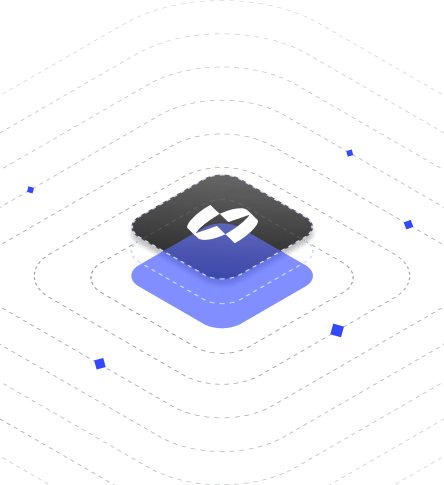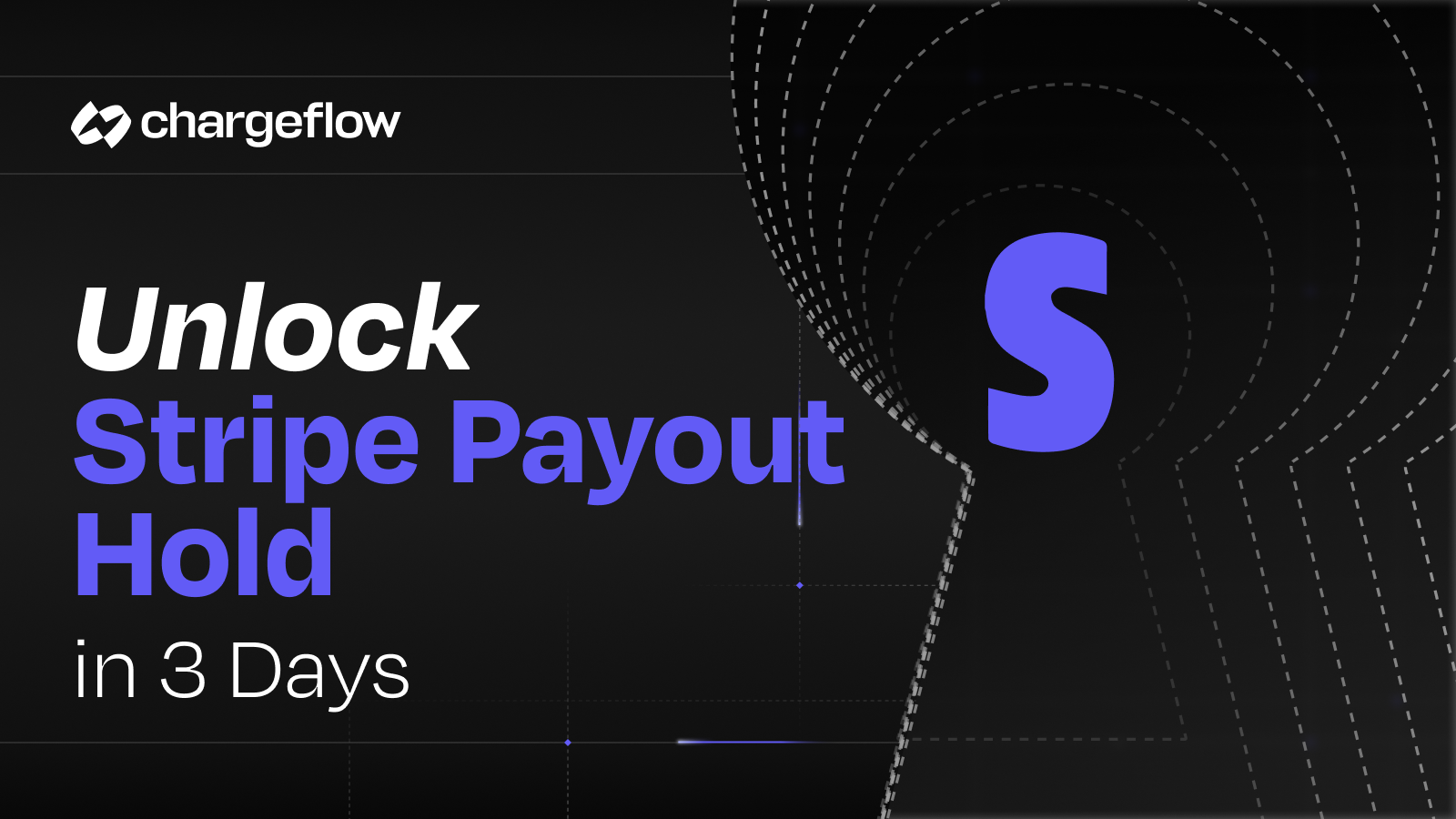Safeguarding Against BIN Attack Fraud: A Comprehensive Guide

Chargebacks?
No longer your problem.
Recover 4x more chargebacks and prevent up to 90% of incoming ones, powered by AI and a global network of 15,000 merchants.
Defend yourself against BIN attack fraud with our comprehensive guide. Stay protected and outsmart the scammers. Start safeguarding today!
Welcome to a comprehensive guide on safeguarding against BIN Attack Fraud, where we unravel the intricate world of online fraud and arm you with the knowledge to protect yourself and your business. In today's digital age, staying one step ahead of cybercriminals is crucial, and that's exactly what we'll help you achieve.
Online fraud has become increasingly sophisticated, and one prevalent form is BIN Attack Fraud. But what exactly is it? BIN, which stands for Bank Identification Number, is the first six digits of a payment card.
BIN Attack Fraud refers to the malicious exploitation of this information to carry out unauthorized transactions, compromising both individuals and businesses.
Throughout this article, we'll delve into the various types of BIN Attack Fraud, identify warning signs to watch out for and equip you with effective prevention strategies. Whether you're an individual concerned about protecting your financial information or a business owner seeking to safeguard your customers' data, this guide has you covered.
Get ready to outsmart the fraudsters and secure your financial well-being. Let's begin!
What is BIN Attack Fraud?
A BIN attack is a type of credit card fraud where the attacker uses brute force methods to guess a valid combination of a credit card number, expiration date, and card verification value (CVV).
The first six to eight digits of a credit card number are known as the Bank Identification Number (BIN), which is unique to a single issuer. By targeting a specific BIN, the attacker can increase their chances of guessing a valid card number.
The attacker will typically use a botnet to automate the process of generating and testing card numbers. A botnet is a network of computers that have been infected with malware and can be controlled by the attacker.
The botnet can quickly generate and test hundreds or thousands of card numbers, which is why BIN attacks are also known as "brute force" or "enumeration" attacks.
Once the attacker has found a valid card number, they can use it to make fraudulent purchases. They may also sell the card number to other criminals or use it to create counterfeit cards.
BIN attacks are a growing threat to businesses and consumers. In 2022, BIN attacks accounted for over $219 million in losses.
Case Studies: Notable BIN Attack Fraud Incidents
There have been a number of notable BIN attack fraud incidents in recent years. Here are a few examples:
- In 2017, a group of hackers used BIN attack fraud to steal over $1 million from businesses in the United States. The hackers targeted businesses that used a specific payment processor. They were able to obtain the BIN numbers for these businesses and use them to generate valid credit card numbers. The hackers then used these cards to make fraudulent purchases.
- In 2018, a group of hackers used BIN attack fraud to steal over $500,000 from businesses in the United Kingdom. The hackers targeted businesses that sold high-value items, such as electronics and jewelry. They were able to obtain the BIN numbers for these businesses and use them to generate valid credit card numbers. The hackers then used these cards to make fraudulent purchases.
- In 2019, a group of hackers used BIN attack fraud to steal over $2 million from businesses in Australia. The hackers targeted businesses that sold travel and accommodation services. They were able to obtain the BIN numbers for these businesses and use them to generate valid credit card numbers. The hackers then used these cards to make fraudulent bookings.
These are just a few examples of BIN attack fraud incidents. These incidents highlight the importance of businesses and consumers being aware of this type of fraud and taking steps to protect themselves.
Types of BIN Attack Fraud
BIN attack fraud is a serious threat that comes in different forms, each with its own unique characteristics and objectives. Understanding these types of attacks is crucial in safeguarding your financial transactions.
Let's explore the various types of BIN attack fraud and how they can affect you:
1. Card Testing Attacks
Card testing attacks involve fraudsters attempting to verify the validity of stolen credit card information. By making small, inconspicuous transactions, they can determine which cards are still active and usable. This helps them identify the most profitable cards to exploit further.
2. Card Cracking Attacks
Card cracking attacks target individuals who are in dire financial situations. Scammers entice them with promises of quick money, asking for their card information in return. Once they obtain the details, they drain the victim's account or use the card for illicit activities, leaving the victim in a worse financial state.
3. Carding Attacks
In carding attacks, criminals use stolen card data to make unauthorized purchases. They often sell the purchased items on the black market for profit. Carding attacks can happen both online and offline, making it essential to be vigilant in protecting your card details.
4. Identity Theft and BIN Attacks
Identity theft is a serious crime where fraudsters steal personal information to impersonate someone else. In combination with BIN attacks, criminals use stolen identities to apply for credit cards, and loans, or conduct fraudulent transactions. This can severely impact victims' credit scores and financial stability.
Warning Signs of BIN Attack Fraud
Here are some warning signs of BIN attack fraud:
- Small, repeated transactions: Fraudsters often test stolen credit card numbers by making small, low-value purchases. If you see a pattern of small, repeated transactions from the same IP address, it could be a sign of a BIN attack.
- High-velocity transactions: Once a fraudster has found a valid credit card number, they may try to make as many purchases as possible in a short period of time. If you see a sudden spike in high-velocity transactions, it could be a sign of a BIN attack.
- Authorization errors: If a fraudster is trying to use a stolen credit card number, they may encounter authorization errors. These errors can be a sign that the card number is invalid or that the card has been flagged for fraud.
- CVV errors: The CVV is a three-digit code that is printed on the back of credit cards. Fraudsters often do not have the CVV, so they may make errors when entering it. If you see a pattern of CVV errors, it could be a sign of a BIN attack.
- Purchases made outside of normal business hours: Fraudsters may try to fly under the radar by making purchases outside of normal business hours. If you see a pattern of purchases being made late at night or early in the morning, it could be a sign of a BIN attack.
If you see any of these warning signs, it is important to investigate further. You can contact your credit card company or a fraud prevention expert to get more information.
Techniques and Strategies to Prevent BIN Attack Fraud
By investing in robust fraud detection systems, you can stay one step ahead of fraudsters. These systems analyze transaction patterns, flag suspicious activities, and provide real-time alerts, allowing you to take immediate action.
2. Implement Two-Factor Authentication
Enhance your security by implementing two-factor authentication (2FA) for all user accounts. With 2FA, not only will users need to enter their passwords, but they will also need to provide a secondary verification method, such as a unique code sent to their mobile devices.
This additional layer of security adds a significant barrier against unauthorized access and reduces the risk of BIN attack fraud.
3. Enhance Password Security Measures
Encourage users to create strong, unique passwords and regularly update them. Enforce password complexity requirements, such as a combination of uppercase and lowercase letters, numbers, and special characters.
Additionally, educate users about the importance of not reusing passwords across multiple accounts to minimize the impact of a potential breach.
4. Utilize Address Verification Services
Integrate address verification services into your payment processing system. These services compare the billing address provided by the customer with the address on file with the card issuer, helping to detect discrepancies and potential fraudulent activities.
By verifying addresses, you add an extra layer of protection against BIN attack fraud.
5. Monitor and Analyze Transaction Patterns
Keep a close eye on transaction patterns and establish baseline behaviors for your users. Implement sophisticated monitoring systems that can identify any anomalies or deviations from normal patterns.
By monitoring transaction activities, you can quickly detect and respond to any suspicious behavior, mitigating the risk of BIN attack fraud.
Best Practices for Merchants and E-commerce Platforms
By implementing the following best practices, you can enhance the protection of your customer's sensitive information and safeguard against BIN attack fraud.
1. Conduct Regular Security Audits
Regularly reviewing and assessing your security measures is crucial for staying ahead of potential threats. Conduct comprehensive security audits to identify vulnerabilities and implement necessary updates or patches.
2. Maintain PCI DSS Compliance
Adhering to the Payment Card Industry Data Security Standard (PCI DSS) is essential for maintaining a secure payment environment. Stay up to date with the latest PCI DSS requirements and ensure your systems and processes align with the standards.
3. Enhance Website Security and Encryption
Implement robust security measures, such as Secure Sockets Layer (SSL) certificates, to protect customer data during transmission. Utilize strong encryption algorithms to safeguard sensitive information, such as credit card details and personal data.
4. Educate Employees about BIN Attack Fraud
Train your employees on the risks and signs of BIN attack fraud. Make sure they understand the importance of following security protocols, detecting suspicious activities, and reporting any potential threats immediately.
5. Foster a Culture of Vigilance
Encourage a vigilant mindset among your employees to actively monitor and report any unusual or suspicious transactions. Promote an open communication channel where employees can freely discuss potential security concerns.
6. Implement Multi-Factor Authentication
Utilize multi-factor authentication (MFA) to add an extra layer of security to user accounts. By requiring users to provide additional verification, such as a one-time password or fingerprint scan, you can significantly reduce the risk of unauthorized access.
7. Monitor Transaction Patterns
Leverage advanced analytics tools to monitor transaction patterns and detect any anomalies or suspicious activities. Implement real-time alerts and notifications to promptly address any potential fraudulent transactions.
8. Stay Abreast of Emerging Threats
Stay updated on the latest trends and techniques used by fraudsters. Regularly monitor industry news, attend webinars, and participate in forums to stay informed about new threats and proactive prevention measures.
Can Bin Attack Fraud Lead to Potential Chargebacks?
Yes, BIN attack fraud can lead to potential chargebacks. When a fraudster successfully uses a stolen credit card number to make a purchase, the cardholder may dispute the charge with their credit card company. This is known as a chargeback.
In the case of a BIN attack, the fraudster may use a stolen credit card number to make a small, low-value purchase. The cardholder may not notice the fraudulent charge until they receive their credit card statement. At this point, they may dispute the charge with their credit card company.
The credit card company will investigate the chargeback and determine whether or not it is legitimate. If the credit card company finds that the charge was fraudulent, they will issue a chargeback to the merchant. This means that the merchant will not be able to collect payment for the fraudulent purchase.
Chargebacks can have a significant financial impact on merchants. In addition to the lost revenue, merchants may also be charged a fee by the credit card company for each chargeback.
Secure Your Revenue and Reduce Chargebacks with Chargeflow
Chargebacks are a major problem for eCommerce merchants. They can cost businesses a lot of money, and they can also damage their reputation. Chargeflow is a chargeback management solution that can help you reduce chargebacks and protect your revenue.
Chargeflow uses machine learning and artificial intelligence to create the world's first science-based chargeback response template. This template is proven to increase your chargeback win rate, which means you'll keep more of your revenue.
In addition to its science-based chargeback response template, Chargeflow also offers a variety of other features that can help you reduce chargebacks. These features include:
- Automated chargeback management: Chargeflow takes care of the entire chargeback process, from filing the dispute to responding to the cardholder's bank. This frees up your time so you can focus on other aspects of your business.
- Comprehensive chargeback evidence: Chargeflow integrates with your business to produce the most comprehensive chargeback evidence in the world. This evidence is custom-tailored to your store and is designed to increase your chances of winning a chargeback dispute.
If you're an eCommerce merchant, Chargeflow is a valuable tool that can help you reduce chargebacks and protect your revenue. With Chargeflow, you can:
- Reduce your chargeback costs: Chargeflow can help you reduce your chargeback costs by preventing future chargebacks.
- Improve your customer satisfaction: Chargeflow's automated process ensures that your customers are quickly and efficiently resolved.
- Protect your reputation: Chargebacks can damage your reputation, but Chargeflow can help you protect your reputation by helping you win chargeback disputes.
If you're ready to start reducing chargebacks and protecting your revenue, sign up for Chargeflow today. You won't regret it.

Chargebacks?
No longer your problem.
Recover 4x more chargebacks and prevent up to 90% of incoming ones, powered by AI and a global network of 15,000 merchants.






























.png)








